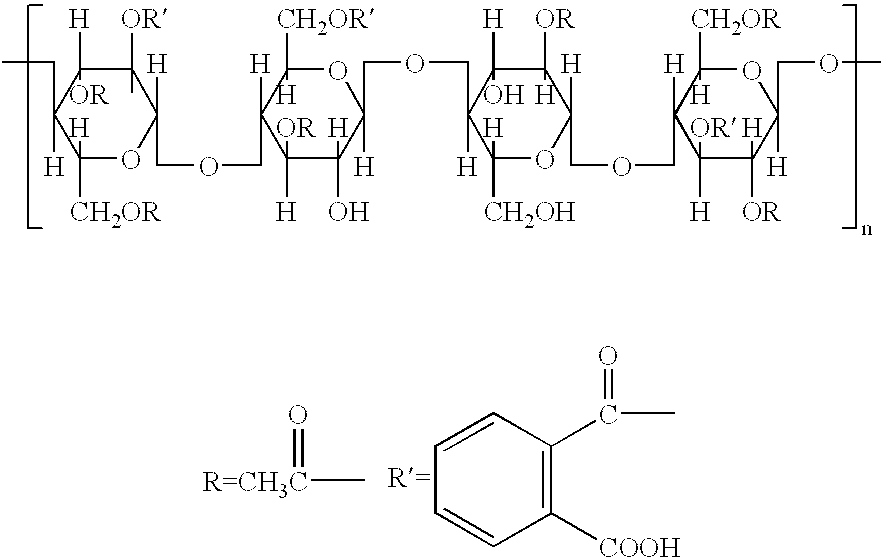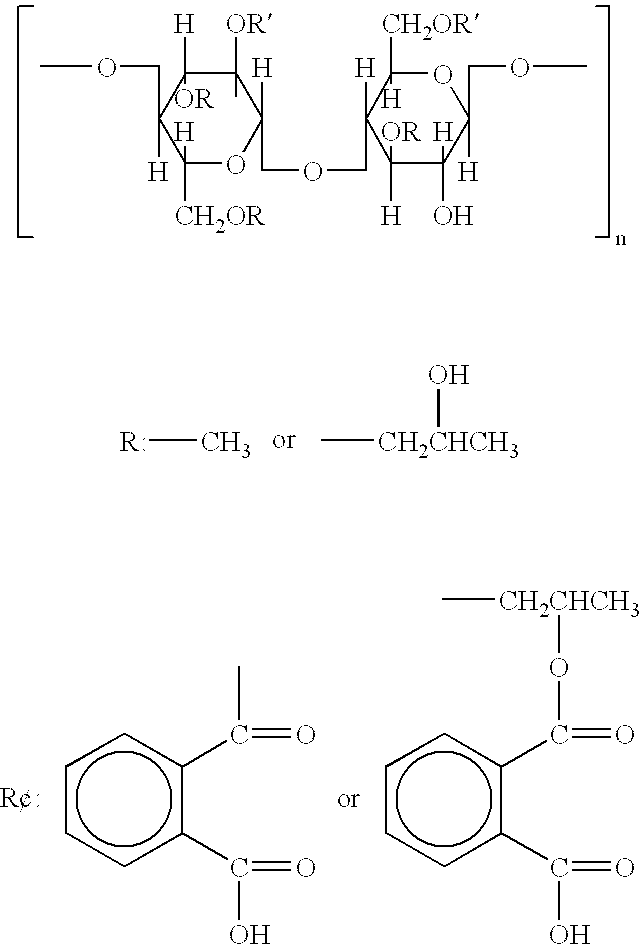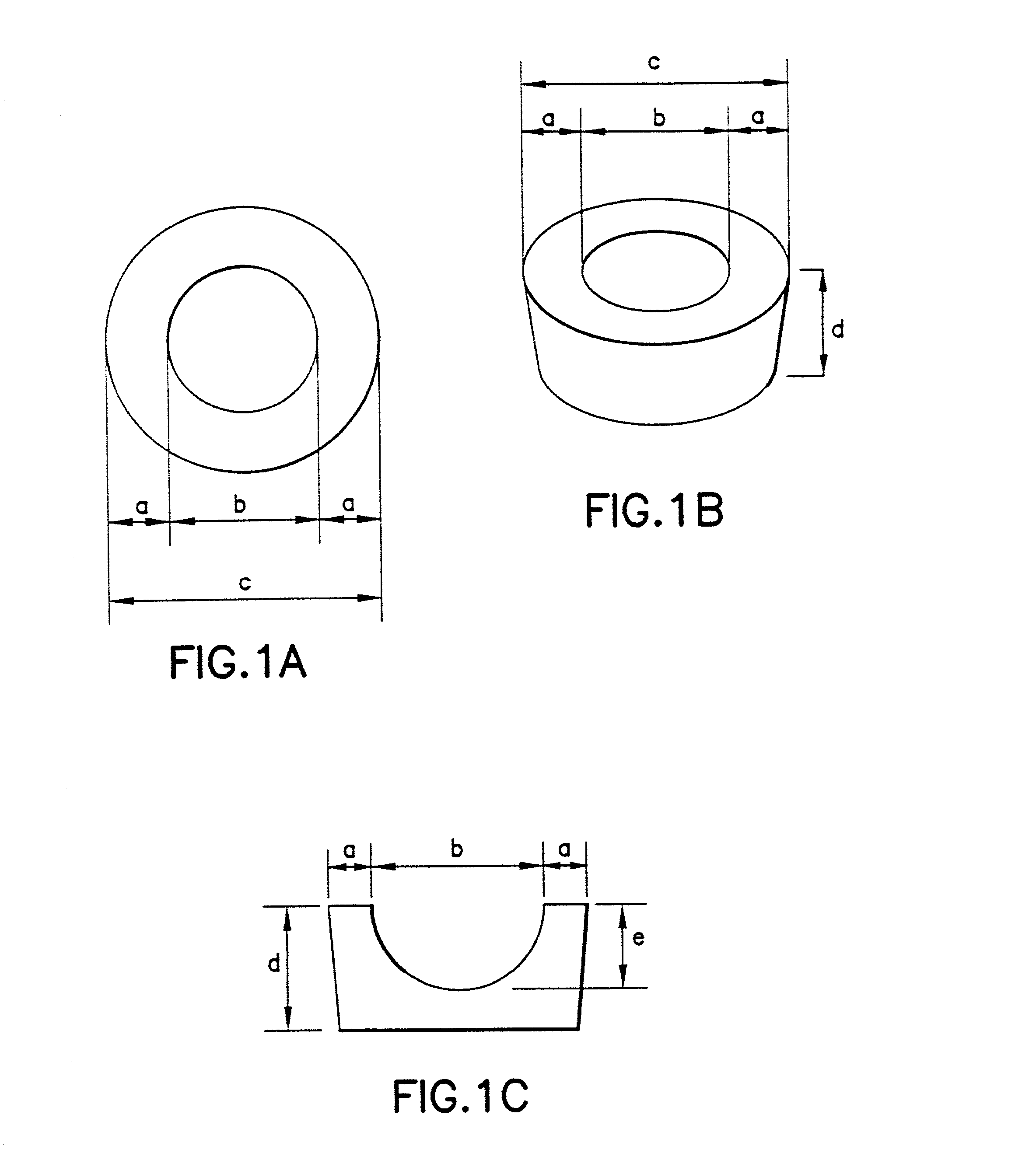Biodegradable microbicidal vaginal barrier device
a vaginal barrier and biodegradable technology, applied in the field of bioerodible microbicidal vaginal sponges, can solve the problems of n-9 being used as a chemical barrier, unable to meet the needs of developing countries with scarce clean water supplies, and being removed after use and either discarded
- Summary
- Abstract
- Description
- Claims
- Application Information
AI Technical Summary
Problems solved by technology
Method used
Image
Examples
example 1
[0174] A solution of HPMC (100 cps; Spectrum, New Brunswick, N.J.: 1 weight %) in distilled water was prepared. Subsequently MC (Spectrum; 4,000 cps) was added to a final concentration of 1 weight % and "AQUATERIC" was added to a final concentration of 3 weight %. The suspension was foamed using either a Caffe Froth foamer (Bonjour Pacheco, Calif.) or an ESGE (Switzerland) homogenizer M133 / 1281-0. The generated foam was distributed into molds (e.g., molds for baking muffins with a "TEFLON" lining to facilitate the ease of removal of the final sponges) and rapidly frozen. Subsequently the frozen foams in the molds were freeze-dried to remove all water. The end-product was a soft sponge suitable for vaginal insertion.
[0175] The composition of the foams can be altered by, for example, using 2 weight % HPMC (4,000 cps) or 1 weight % HPMC (4,000 cps) combined with 1 weight % MC (400 cps). Other combinations of HPMC and MC of different viscosities can be used as long as the sponge remains...
example 2
[0176] Sponges are prepared from inexpensive and commercially available CAP (Eastman Chemical Company, Kingsport, Tenn.) by the following procedure: 8 volumes of 0.75% methylcellulose (viscosity=400 cps) and 0.75% methylcellulose (viscosity=4,000 cps) in water (first solution) are mixed with 2 parts of a 10 weight % solution of CAP in ethyl acetate containing 5 volume % ethanol (second solution). The resultant emulsion is foamed, frozen and further treated as described herein for sponges based on the "AQUATERIC" composition. The mechanical and other properties of the sponges (softness, etc.) can be controlled by varying the concentrations of the methylcelluloses and the CAP. The optimal range of concentrations for the methylcelluloses in the first solution being 0.4 to 1.5 weight % each, and for CAP 2 to 15 weight % in ethyl acetate containing 5 volume % ethanol (second solution).
example 3
[0177] To gain insight into the physical properties of the CAP sponges, as compared with currently available polyurethane sponges sold as contraceptive products over the counter ("OTC"), the pore size of CAP sponges was compared to that of the "TODAY" polyurethane sponge (Allendale Pharmaceuticals, Inc. Allendale, N.J.) using high pressure mercury porosimetry. The results shown in FIG. 2 indicated that the average pore size of the CAP sponges is substantially smaller than that of the polyurethane "TODAY" sponge, indicating that the CAP sponge is less likely to allow passage of virus infected cells. Furthermore, the CAP sponge by itself provides a low pH (acidic) environment without the need for any additional ingredient, to cause the lysis of infected cells followed by inactivation of the released virus particles. This cannot be accomplished using the polyurethane sponge, which by itself is inert, and requires the presence of a detergent to become virucidal and spermicidal. This exp...
PUM
| Property | Measurement | Unit |
|---|---|---|
| Percent by mass | aaaaa | aaaaa |
| Particle size | aaaaa | aaaaa |
| Particle size | aaaaa | aaaaa |
Abstract
Description
Claims
Application Information
 Login to View More
Login to View More - R&D
- Intellectual Property
- Life Sciences
- Materials
- Tech Scout
- Unparalleled Data Quality
- Higher Quality Content
- 60% Fewer Hallucinations
Browse by: Latest US Patents, China's latest patents, Technical Efficacy Thesaurus, Application Domain, Technology Topic, Popular Technical Reports.
© 2025 PatSnap. All rights reserved.Legal|Privacy policy|Modern Slavery Act Transparency Statement|Sitemap|About US| Contact US: help@patsnap.com



